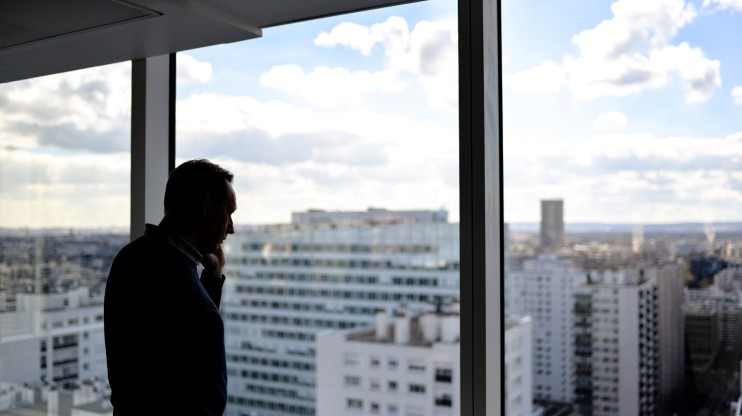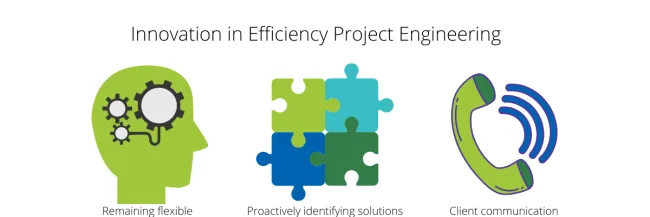Have Questions? We’re Here to Help!
Discover more about improving facility performance while reducing costs.

No two efficiency projects are ever the same. Differences between industries and facility space uses, between client priorities and individual buildings, all require custom engineering for effective efficiency projects. What this boils down to is custom engineering = unique tailored solutions, every time. The work we do isn’t “plug and play” and there are no cookie cutter solutions. As a project manager, I’m continually innovating project design to decrease energy use, improve operations and deliver any number of metrics for client savings and comfort. Innovation in efficiency project engineering means three things:
Turnkey solutions mean engineering the best solution for customer, and in the most efficient way possible. While recently working with a client in higher education we had to use these above three steps to solve a uniquely challenging site condition with the goal of maintaining the project’s budget and meeting the client’s expectations.

Because of the nature of retrofit jobs, there are always “unknown unknowns.” When efficiency project engineering involves a large scale, multi-building campus, lots of issues can come up that need to be managed, particularly when dealing with older buildings. We always expect to find the unexpected: differences between drawings and actual building space, fixtures that don’t fit, how to mount fixtures, new building uses, scheduling conflicts,etc.
While working on a large, LED lighting upgrade with one of our higher education clients, we discovered a problem. 7 of the 19 buildings we’re working in were designed with tier 2 lighting controls. This type of fixture has controls that communicate to other fixtures in the room (occupancy sensors, dimming, etc.). It’s a relatively simple control option and offers some great efficiency benefits, but it’s limited in the amount of control and data capture available.
In comparison, the other 12 buildings out of 19 were tier 3. These controls talk to each other in the room and communicate to a master controller that can pull additional occupancy data, usage data and a number of other important metrics. Because of the connectivity required for this communication, these controllers are wired back to the internet. This means that the controller needs to have a dedicated IP connection to the campus network to report into software on one of the university’s servers.
Despite advances in wireless technology, part of the installation of this tier 3 system depends on hardwiring due to the amount of data that each controller is receiving and sending to the associated server. These buildings dated back anywhere from the 1800s to the 1960s and ‘70s when poured concrete was the latest and greatest in building design. Adding this kind of wiring to these building types was going to be a challenge.
We could have done several things at this point in the project:
Creative problem solving is just a puzzle in real life. You have all of the pieces and just need to fit them together. One thing that I had noticed about the buildings that we were working in was they had a lot of unused data jacks – the kind that you see your office printer plugged into. Funnily enough, those were what I was trying to avoid installing. So, I made a call to a colleague.
Over the course of this project, the lead project manager built a great relationship with the facilities team. It’s always our goal: feel like an extension of the existing team for the time that we’re working together. We called our onsite contact and explained what we were running into. We communicated the issue to our contact and proposed that we conduct a survey of unused data ports in the building where running new wire was cost-prohibitive. Once we had the building and data ports mapped out, we sent the data on to our contact.
Ingenuity and creative thinking paid off. My contact let us know that the university had no issue with us taking over unused data ports for the lighting system. That 15 minute call and a good relationship is saving this project money and progressing much more quickly by using the existing system and avoiding whole new wiring schematic.
Ultimately, efficiency project engineering is all about the flexibility: problem solving, thinking outside the box and being creative.
Discover more about improving facility performance while reducing costs.